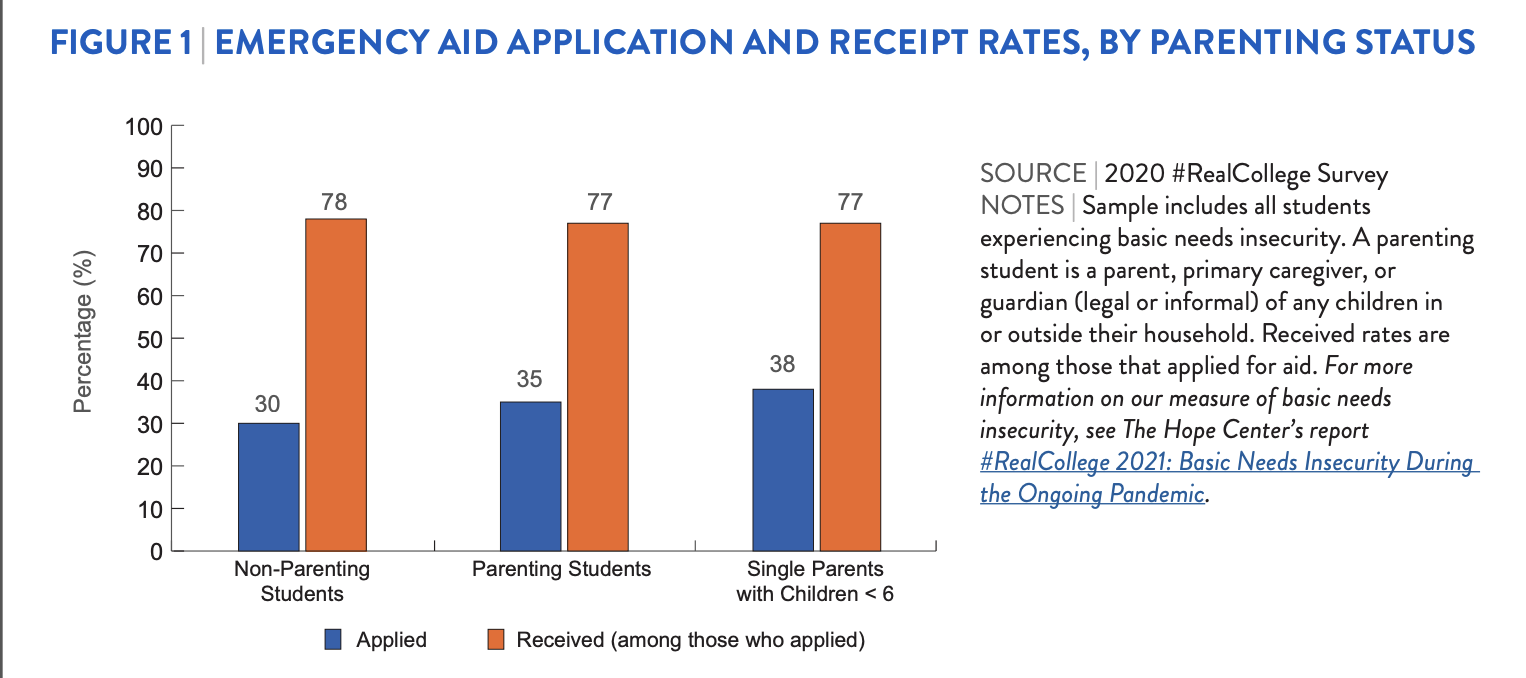related to food and housing instability, inadequate health care and rising attendance costs. In fact, the U.S.
Department of Education recently released the first-ever national estimates of food insecurity and homelessness
and found that college students are more likely to face these issues than the general population. These financerelated
challenges have a significant and negative impact on a student’s academic performance and are
associated with stopping-out and dropping-out of college – even when the financial challenge amounts to a
relatively small dollar amount. Emergency Aid (EA) programs are one approach that colleges use to assist students
with these unforeseen challenges.
The threats students have faced in meeting their basic needs while in college have increased significantly in the
last 15 years, with less than half of all public community colleges today meeting criteria for being affordable. The
COVID-19 pandemic compounded these affordability issues as the entire sector forced students out of housing,
shut down dining halls, and shifted their instructional model overnight.
In response, Believe in Students and the then-startup mobile app called Edquity – now Beam – partnered with three
colleges in West Texas to provide emergency aid funding over two school years, from fall of 2020 through spring
of 2022, to help keep students in school as well as in their homes with their families intact. In total, $835,750
was disseminated throughout this period to help 1,937 students address food, housing, transportation, and other
expenses.
One of the partner institutions involved, Odessa College, was able to provide persistence and graduation data for
the students who received emergency aid through this program. This data shows that over 90% of all aid recipients
persisted in college the following semester or earned their degree. This outcome is particularly noteworthy
considering the national persistence rate for public two-year institutions (students continuing their education at
the same or a different institution) was 61.5% in fall 2020, while the retention rate (students returning to the same
institution) was 52.4%.
This report describes the unique partnership between community colleges in West Texas, Believe in Students,
and Beam, sharing information about how the dollars were used by students and how the partners adapted as a
result of the project. The findings and recommendations shared here are scalable to other campuses in Texas, and
the student outcomes will serve the region’s workforce and help meet the state’s 60X30 attainment goals and
workforce needs.


